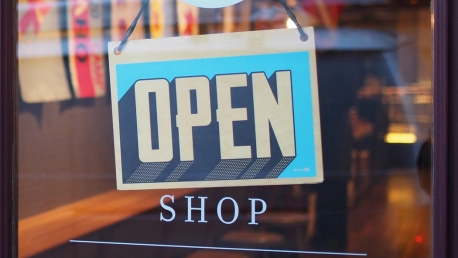An InReality store-analytics and customer experience report shows that by 2016 the customers have been transformed by their online shopping experiences to such a degree that they demand similar brick-and-mortar store directions, as they would receive in a digital environment.This triggers a wave of in-store tech developments.
The Reality of Retail report shows the updated situation of customer expectations that will gradually push for change in what the role and function of physical stores is concerned.
How are the retailers preparing for this increasing demand for more technologized, digitalized and virtualized stores?
With 69 percent of the shoppers more likely to buy in-store by the means of self-help tech (digital kiosks and active displays), and a whopping 85 percent of shoppers determined not to give a second chance to any brand or product that disappoints them (while 73 percent of customers are having the same attitude towards store customer experience) – the brands and retailers are set to face this tech challenge and emerge as winners, if they want to be present in the first rows of tomorrow’s retail.
Advice for smaller retailers
The big brands can well afford to pioneer innovative retail technologies in-store, or even to expand their operations from being exclusively online to going into brick-and-mortar stores, as Amazon did.
However, both these actions may not apply to smaller retailers. Increasing the number of stores is a contraindicated move without having developed a secure strategy, while investing in novel technologies may prove risky.
There are other means of tech improvement available for smaller retailers when they wish to align their customer strategy with this trend – some of them involving less or no risks. Here are 7 low-risk tech adoption measures that a small business can easily implement in view of shaping up its modern retail techies, and of delivering better customer experiences:
- Having a mobile app for your customers to able to reach you anytime, from anywhere and vice-versa (the retailers can reach their customers via an application just as easily) is like a mandatory “2016 retail badge” that marks the digital presence of any retailer;
- Synchronizing in-store and in-app content would be a following step that prevents customers from having a disappointing experience and creates the feeling of community and personalized interactions;
- Making use of the relevant customer feedback via the customer communication channels and marketing channels: for example, the customers demand grocery stores to list their deals and offers more clearly, their online channels included;
- Dynamic pricing via electronic price tags allow the instant price changes to migrate from the online environment to the brick-and-mortar locations; thus the real-time expectations of customers can be fulfilled with previous careful planning from retailers that are willing to adopt this strategy and the related technology in their stores;
- Beacon technology also qualifies as a low monetary risk tech, while it can significantly improve the in-store customer experience; the retailers have to choose the right platform and invest in the tiny gadgets, considering that beacons and their alternative, NFC tags, have been around for a while, therefore various improvements have been implemented (some energy saving innovative systems are also on the roll for these tiny digital devices that can deliver personalized, localized and comprehensive in-store information, as well as relevant feedback on customer preferences);
- Choosing the right in-store technology to fit your business size is a wise decision; for example, a 2016 study on in-store digital displays showed that they do drive sales, but not in all stores, and their effect depended on the message conveyed: the most effective were the displays that informed customers on price promotions in hypermarkets, while in small convenience-type stores the digital displays decreased sales.
- Various e-payment methods available in-store are another useful mean of raising to the retail tech challenge, while keeping your risks at a low level; with a necessary previous documentation on which payment methods most serve your loyal customers, investing in safe, compliant terminals that allow faster and better payment is a welcomed step in improving the customer experience;
In-store tech, the local retailers’ style
As we’ve previously mentioned, keeping your eye on the latest in-store tech is always useful, as long as you scale all innovative retail solutions to your business and store size, and try to find the most suited equation for your own operations.
It is better to learn from the mistakes of other peers, whose market power makes them afford to cover the less beneficial tech investments – therefore you might want to allow a due period of time to go by until you can form an idea on exactly how efficient a new technology is for your size of store, and only then introduce it to your own locations.
Check the latest studies and reports, analyze the technology yourself and develop an educated opinion in order to decide what is best for your business. Do not wait too long, but do not jump into insufficiently planned investments either.
Here’s a shortlist provided by an online source on what would be the retail tech trends that suit local retailers:
- Point of sale solutions: mobile POS devices;
- In-store digital displays and video streaming, digital signage included, tailored for your needs and scale;
- Various mobile payments terminals, suited to your clients’ needs;
- Engaging associated applications that would stimulate customers.









